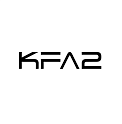 PowerColor Red Dragon Radeon RX 570
PowerColor Red Dragon Radeon RX 570
 Sapphire Nitro+ Radeon RX 480 8GB
Sapphire Nitro+ Radeon RX 480 8GB
Comparision PowerColor Red Dragon Radeon RX 570 vs Sapphire Nitro+ Radeon RX 480 8GB
Grade
Top specs and features
- Passmark score
- 3DMark Cloud Gate GPU benchmark score
- 3DMark Fire Strike Score
- 3DMark Fire Strike Graphics test score
- 3DMark 11 Performance GPU benchmark score
Passmark score
3DMark Cloud Gate GPU benchmark score
3DMark Fire Strike Score
3DMark Fire Strike Graphics test score
3DMark 11 Performance GPU benchmark score
Description
The PowerColor Red Dragon Radeon RX 570 video card is based on the Polaris architecture. Sapphire Nitro+ Radeon RX 480 8GB on the Polaris architecture. The first has 5700 million transistors. The second is 5700 million. PowerColor Red Dragon Radeon RX 570 has a transistor size of 15 nm versus 14.
The base clock speed of the first video card is 1168 MHz versus 1208 MHz for the second.
Let's move on to memory. PowerColor Red Dragon Radeon RX 570 has 4 GB. Sapphire Nitro+ Radeon RX 480 8GB has 4 GB installed. The bandwidth of the first video card is 224 Gb/s versus 256 Gb/s of the second.
FLOPS of PowerColor Red Dragon Radeon RX 570 is 4.94. At Sapphire Nitro+ Radeon RX 480 8GB 6.
Goes to tests in benchmarks. In the Passmark benchmark, PowerColor Red Dragon Radeon RX 570 scored 6876 points. And here is the second card 8698 points. In 3DMark, the first model scored 13645 points. Second 12264 points.
In terms of interfaces. The first video card is connected using PCIe 3.0 x16. The second is PCIe 3.0 x16. Video card PowerColor Red Dragon Radeon RX 570 has Directx version 12. Video card Sapphire Nitro+ Radeon RX 480 8GB -- Directx version - 12.
Regarding cooling, PowerColor Red Dragon Radeon RX 570 has 120W heat dissipation requirements versus 150W for Sapphire Nitro+ Radeon RX 480 8GB.
Why Sapphire Nitro+ Radeon RX 480 8GB is better than PowerColor Red Dragon Radeon RX 570
- 3DMark Fire Strike Score 11799 против 10395 , more on 14%
- 3DMark Fire Strike Graphics test score 13645 против 12264 , more on 11%
- 3DMark 11 Performance GPU benchmark score 18718 против 18035 , more on 4%
- 3DMark Vantage Performance test score 44962 против 39808 , more on 13%
PowerColor Red Dragon Radeon RX 570 vs Sapphire Nitro+ Radeon RX 480 8GB: highlights


Performance
Memory
General information
Functions
Benchmark tests
Ports
FAQ
How does the PowerColor Red Dragon Radeon RX 570 processor perform in benchmarks?
Passmark PowerColor Red Dragon Radeon RX 570 scored 6876 points. The second video card scored 8698 points in Passmark.
What FLOPS do video cards have?
FLOPS PowerColor Red Dragon Radeon RX 570 is 4.94 TFLOPS. But the second video card has FLOPS equal to 6 TFLOPS.
What power consumption?
PowerColor Red Dragon Radeon RX 570 120 Watt. Sapphire Nitro+ Radeon RX 480 8GB 150 Watt.
How fast are PowerColor Red Dragon Radeon RX 570 and Sapphire Nitro+ Radeon RX 480 8GB?
PowerColor Red Dragon Radeon RX 570 operates at 1168 MHz. In this case, the maximum frequency reaches 1250 MHz. The clock base frequency of Sapphire Nitro+ Radeon RX 480 8GB reaches 1208 MHz. In turbo mode it reaches 1342 MHz.
What kind of memory do graphics cards have?
PowerColor Red Dragon Radeon RX 570 supports GDDR5. Installed 4 GB of RAM. Throughput reaches 224 GB/s. Sapphire Nitro+ Radeon RX 480 8GB works with GDDR5. The second one has 8 GB of RAM installed. Its bandwidth is 224 GB/s.
How many HDMI connectors do they have?
PowerColor Red Dragon Radeon RX 570 has 1 HDMI outputs. Sapphire Nitro+ Radeon RX 480 8GB is equipped with 2 HDMI outputs.
What power connectors are used?
PowerColor Red Dragon Radeon RX 570 uses There is no data. Sapphire Nitro+ Radeon RX 480 8GB is equipped with There is no data HDMI outputs.
What architecture are video cards based on?
PowerColor Red Dragon Radeon RX 570 is built on Polaris. Sapphire Nitro+ Radeon RX 480 8GB uses the Polaris architecture.
What graphics processor is being used?
PowerColor Red Dragon Radeon RX 570 is equipped with Polaris 20 Ellesmere. Sapphire Nitro+ Radeon RX 480 8GB is set to Polaris 10 Ellesmere.
How many PCIe lanes
The first graphics card has 16 PCIe lanes. And the PCIe version is 3. Sapphire Nitro+ Radeon RX 480 8GB 16 PCIe lanes. PCIe version 3.
How many transistors?
PowerColor Red Dragon Radeon RX 570 has 5700 million transistors. Sapphire Nitro+ Radeon RX 480 8GB has 5700 million transistors







































